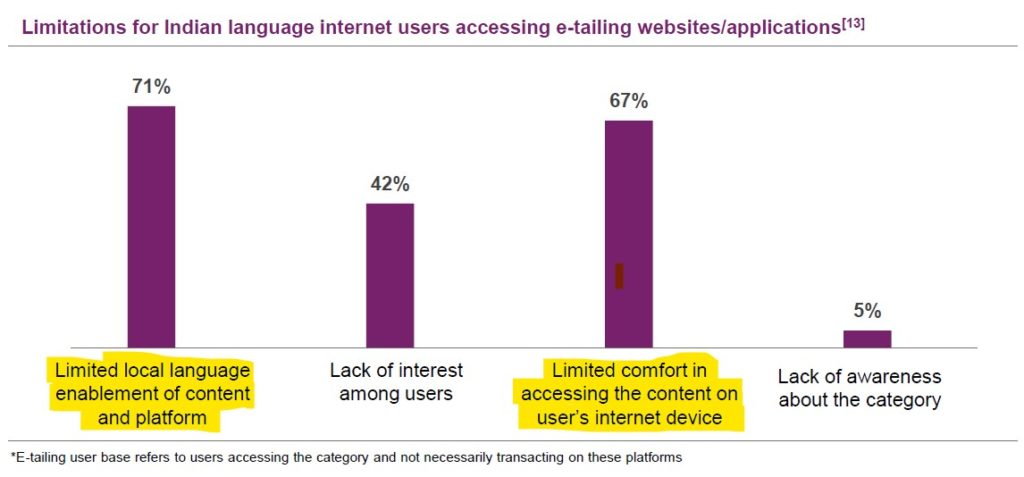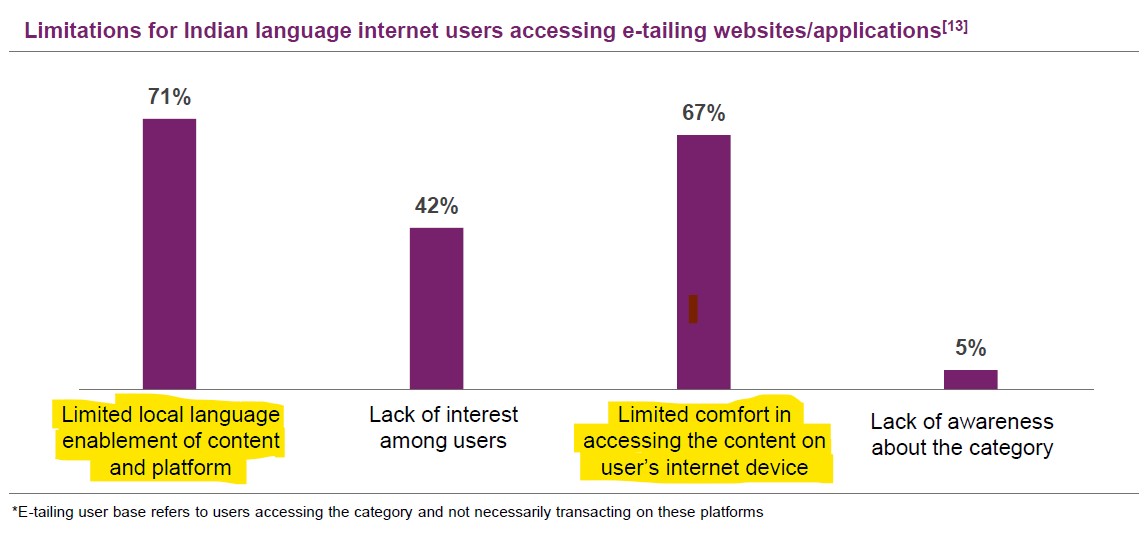India is home to 29 states, 7 union territories and 22 official languages out of which the Government of India has recognized 6 to hold classical stature – Kannada, Malayalam, Odia, Sanskrit, Tamil, and Telugu.
It is the largest populous democracy in the world with over 1.3 billion people. By sheer strength of numbers, there are at least millions of speakers for any official language one can pick.

As per the Technology Department for Indian Languages (TDIL), only 5% of the population knows English and hence the rest of them cannot leverage basic operations on the internet. The government of India also launched the Digital India plan in 2015 to make India a digitally empowered economy. Though culturally rich and linguistically blessed, India still has a long way to go to bridge the language gap when it comes to digital platforms.
This is where localization becomes important for the Indian market.
The untapped market potential for localized digital space
In July 2017, a study by KPMG India and Google predicted that Indian language internet users will outgrow the English user base by 2021. This report presents in detail the key emerging categories which largely cover social media, chat applications, entertainment, digital payments, government services, digital classified, and more.
For a country with only 5% English speaking population, a vastly untapped market is willing to onboard and use the digital products and services if only they communicated in their languages. As per the above-mentioned report, this untapped audience stands 536 million strong.
With the growth in affordable smartphones and cheap data plans, Indian language internet users are bound to grow. Early adopters of localization can benefit largely from it.
Increasing and improving digital literacy
Most of the localized web and mobile applications upon installation ask about language preferences upfront. Language sets the tone of how the user is going to further interact with the application.
Digital environments, whether they are accessed via mobile or web are complex. It is not just a collection of text but comprises UI elements, forms, e-commerce, payment integrations, and more.
While an English internet user in India understands the nuances and iconology used across digital platforms, for an Indian language netizen, this information could be new, overwhelming, or discouraging.
This gap and unfamiliarity with digital literacy may contribute to the reluctance of online activities like making transactions, downloading digital assets, online shopping, etc.
A complete end to end localization removes this distrust and encourages Indian language netizens to participate in activities that matter – onboard, transact, share.
Finding relatability and trust
An organization of either profitable or non-profitable nature keeps its audience at the core and designs communications around them.
Localization is not just an opportunity to make profits, but it is also a window for millions of Indians to find relatability and trust at digital pedestals. It makes Indian language netizens identify with a section of the internet, get access to information, and adopt the healthy habit of information-driven decision making.
This activity encourages them to become an integral part of the ecosystem and contribute to the creation and consumption of non-English content.
Conclusion
Localization for the Indian market is not a choice, it is a mandatory exercise for businesses, governments, and non-governmental bodies to onboard an army of multilingual on digital space and thereby contribute in the process of nation-wide development.
